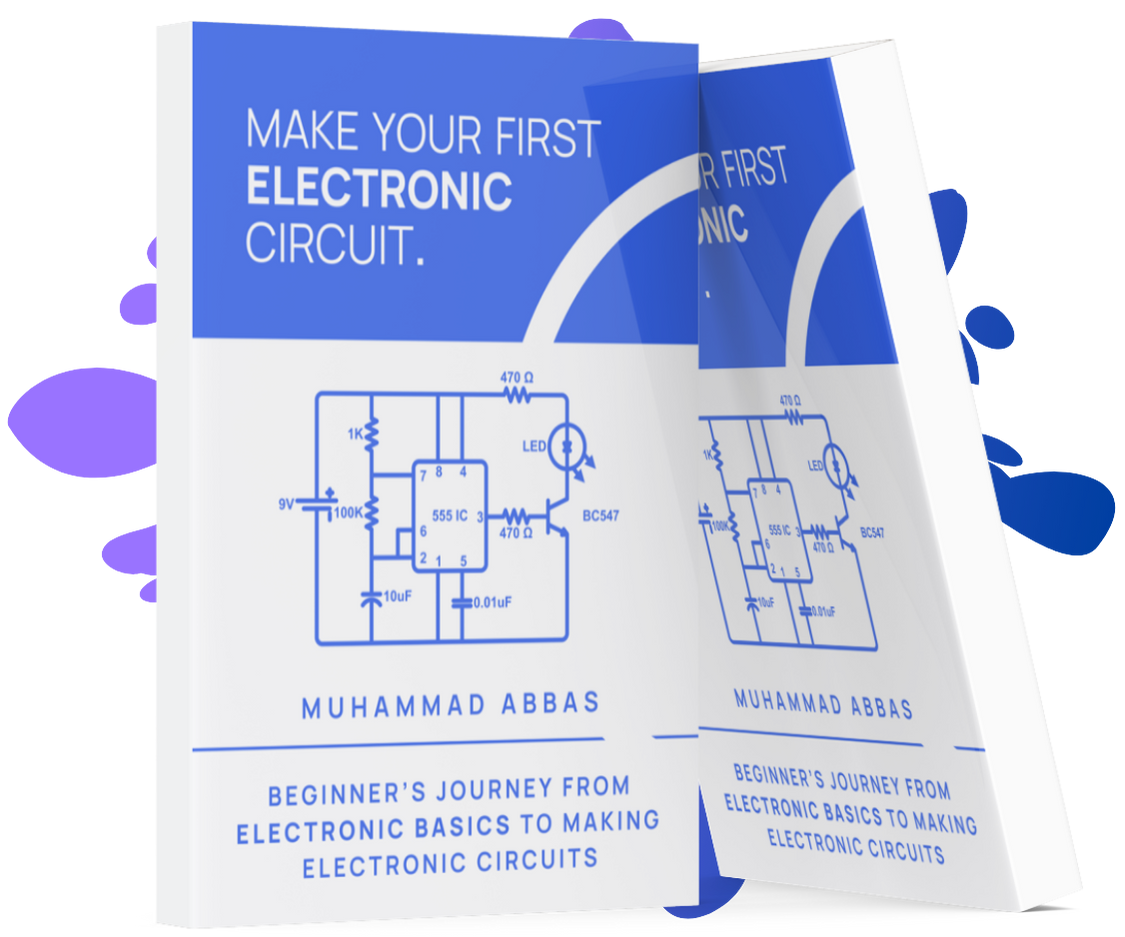Get started with electronics from scratch 🚀
Make Your First Electronic Circuit
$9.99
Beginners! If you’re wondering how to start learning electronics or where to begin, this book is made just for you. It is designed to guide you step by step so you can start from scratch—no prior experience is needed.
- Master the basics of electronics while working on a practical project
- Packed with color diagrams, troubleshooting tips, and easy to follow instructions
Simple Language
Easy to Follow. This book is written in beginner friendly language, making even the most complex concepts simple to understand – no maths expertise required.
Hands-On Learning
The best way to get started with electronics is by doing electronics, making mistakes, and learning from them. This hands-on learning approach makes this book unique and special.
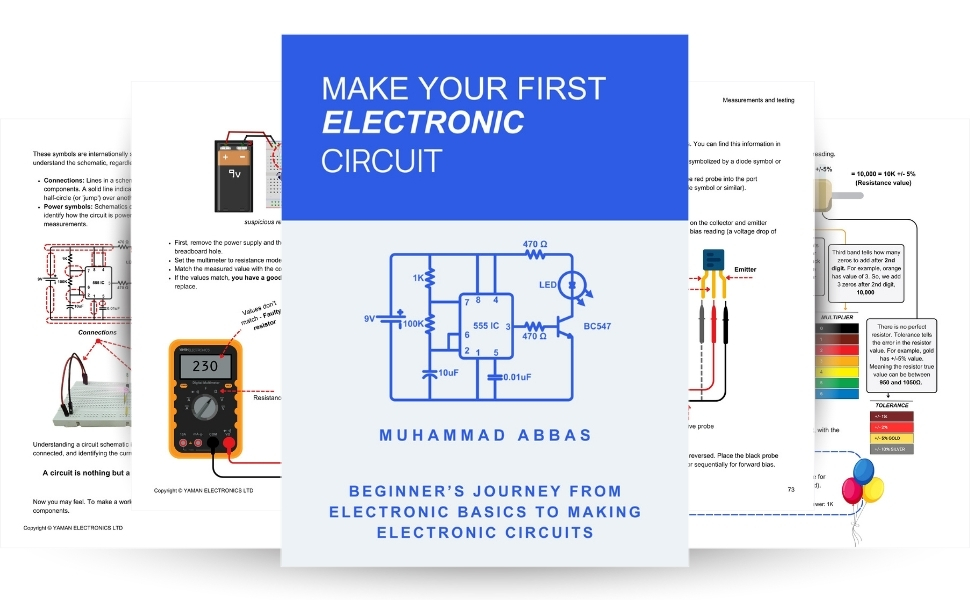
WHAT YOU WILL LEARN
Make Your First Electronic Circuit takes you step by step from understanding electronic basics to successfully building your first electronic circuit. The book is divided into five carefully crafted chapters, each designed to make learning seamless and practical. You don’t need any prior experience – just a willingness to learn.
Chapter 01
INTRODUCTION TO ELECTRONICS
The first chapter is all about mastering the fundamentals. I believe that fundamentals are the most important of all. We learn:
- Definition of electronics
- Classification of materials (conductor, insulators, semiconductors)
- What is an electronic circuit
- What is a circuit schematic, and why it is important
- Understanding the circuit schematic
- What is voltage
- What is current
- Ohm’s law and the relation between current and voltage
- Power
- Fun activities to keep students engaged and curious
Key skills of this chapter: Understanding electronics circuit schematic and calculating the voltage, current, and power rating of electronics components.
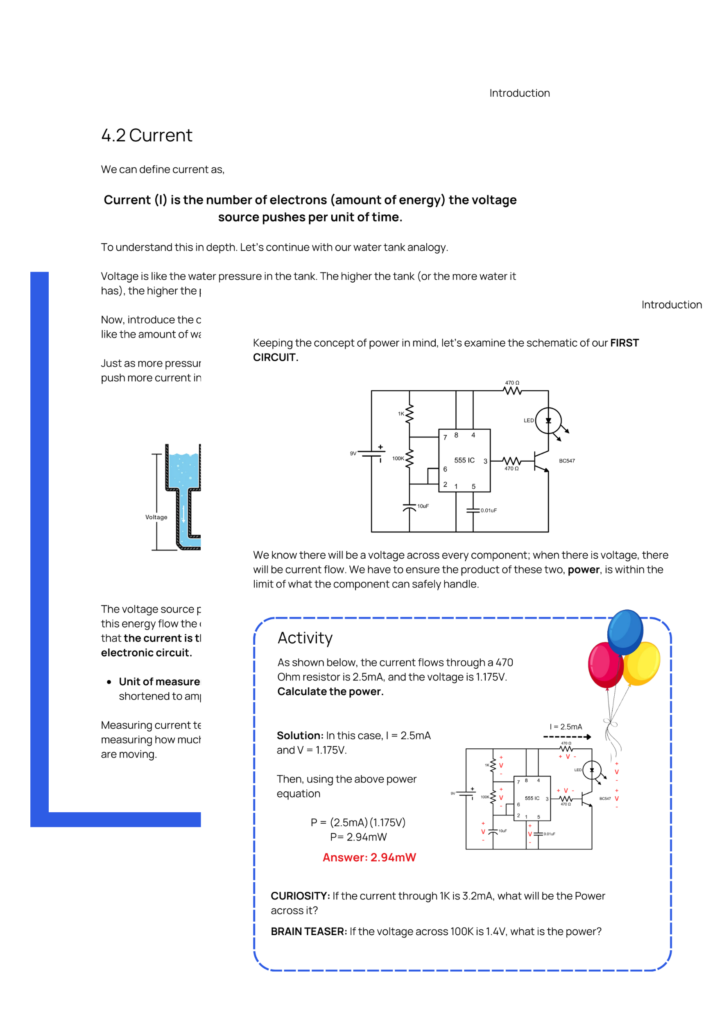
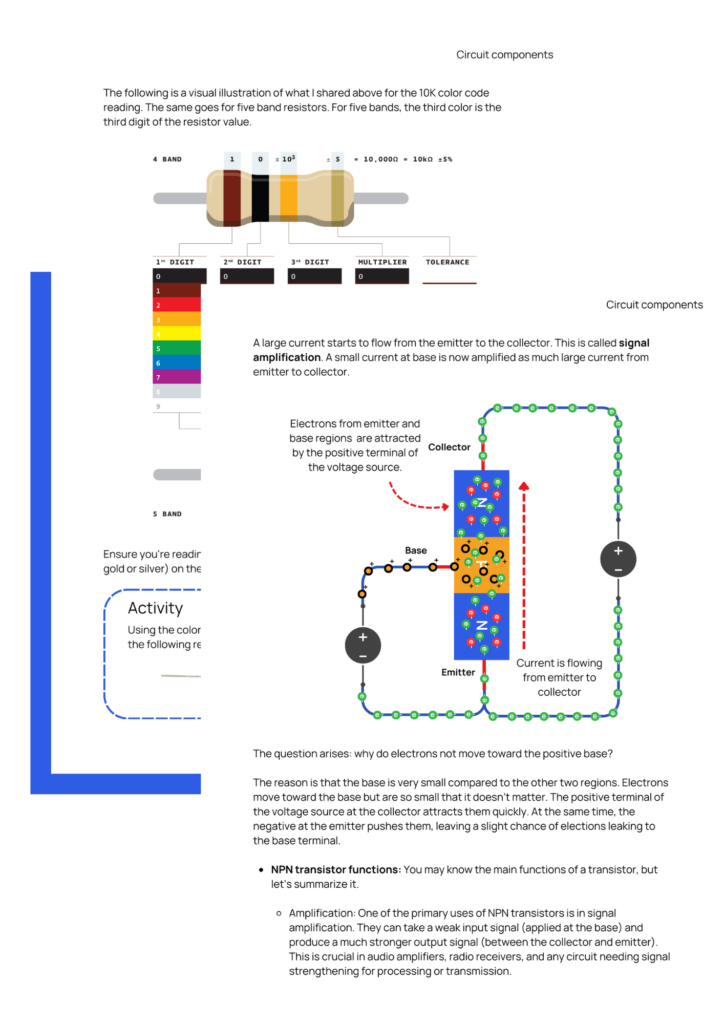
Chapter 02
BASIC ELECTRONICS COMPONENTS
This chapter is all about learning the basics of electronic components. We learn:
- Definition of components and why they are important
- Active and passive components
- Resistor basics (Unit, symbol, color code, rating, and testing)
- Capacitor basics (Unit, symbol, electrolytic and ceramic, value reading, voltage rating, and testing)
- Diode basics
- LED basics
- Transistor basics
- Integrated Circuits (ICs)
Key skills of this chapter: Identify the circuit symbols of components, read their value, and pin configuration.
Chapter 03
ELECTRONICS MEASUREMENTS & TESTING
The third chapter covers how to use measuring instruments like a multimeter to measure and test electronic components. Testing components ensure that we use good ones in our circuits. We learn:
- Digital multimeter basics
- Voltage measurements
- Voltage drop measurement on breadboard
- Current measurements
- Resistor measurement and testing using DMM
- Capacitor measurements and testing
- Diode testing
- LED testing
- Transistor testing
- Continuity testing (open and short circuits)
Key skills of this chapter: How to use a digital multimeter (DMM) to measure and test components. We learn how to use it to troubleshoot circuits for voltage and currents.
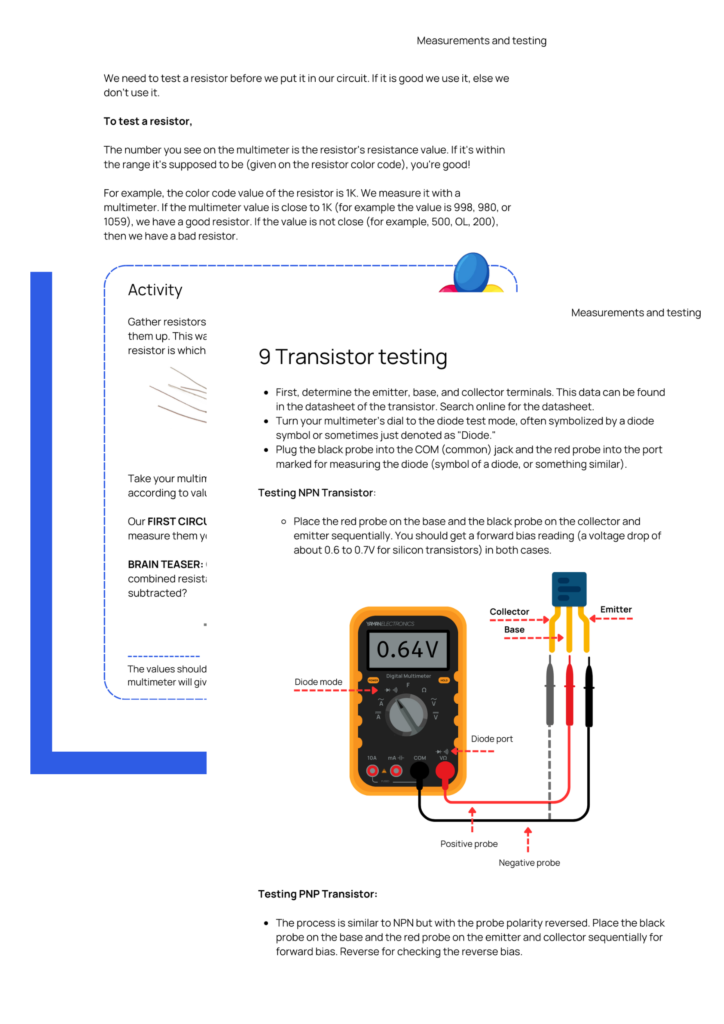
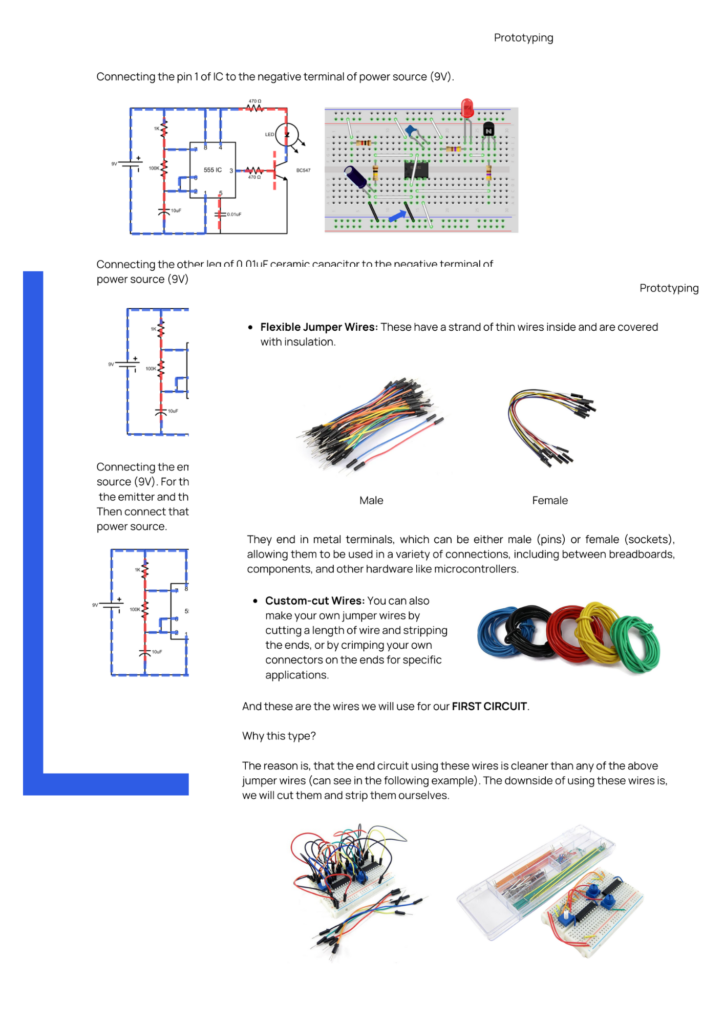
Chapter 04
ELECTRONICS CIRCUIT MAKING – PROTOTYPING
The fourth chapter is all about making your FIRST ELECTRONICS CIRCUIT on the breadboard. We learn:
- What is prototyping and why it is important
- Tools need for making circuits
- Breadboard basics
- Connecting wires
- Working with various types of connecting wires
- Preparing for circuit prototyping
- Understanding the circuit schematic
- Step by step guide of making your FIRST ELECTRONICS CIRCUIT.
- Learning how to correctly put components on a breadboard
Key skills of this chapter: Making circuits on a breadboard from any given circuit schematic.
Chapter 05
CIRCUIT TROUBLESHOOTING
The fifth and final chapter covers solutions to all the possible mistakes a beginner can make. We learn:
- What is circuit troubleshooting
- Tools for troubleshooting
- Beginner common mistakes
- Connection problems
- Loose connections
- Short connections
- Faulty components rectification
- Troubleshooting a complex circuit
- Documentation for troubleshooting
Key skills of this chapter: Learn how to use a multimeter to troubleshoot a circuit on a breadboard. Learn how to make the circuit work exactly it is supposed to be error free.
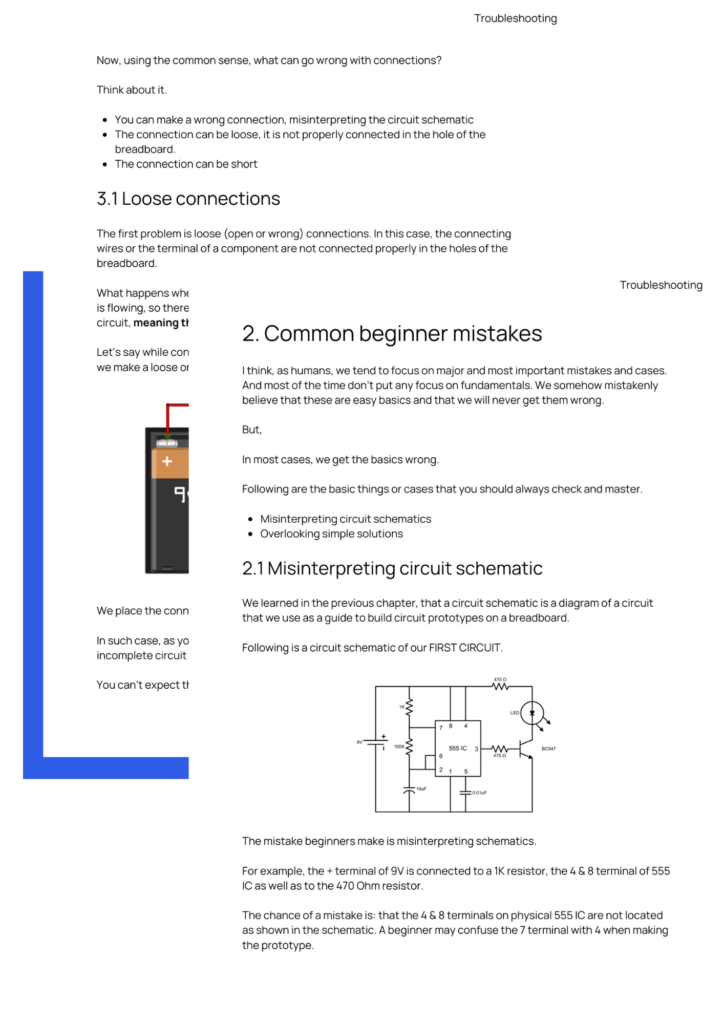
MEET THE AUTHOR

MUHAMMAD ABBAS
MS Electrical Engineering (RF & Microwaves Circuit Design) & B.Sc. Electronics Engineering
Hi, I hope you all are doing great. Through mistakes and repetition, I discovered that learning electronics can be best done if we do it on a project basis. It’s fun, and in the end, you have the feeling of achieving something rather than just reading the theory. I hope you will like this new approach and will be able to start making your small projects on your own.
Thank you

